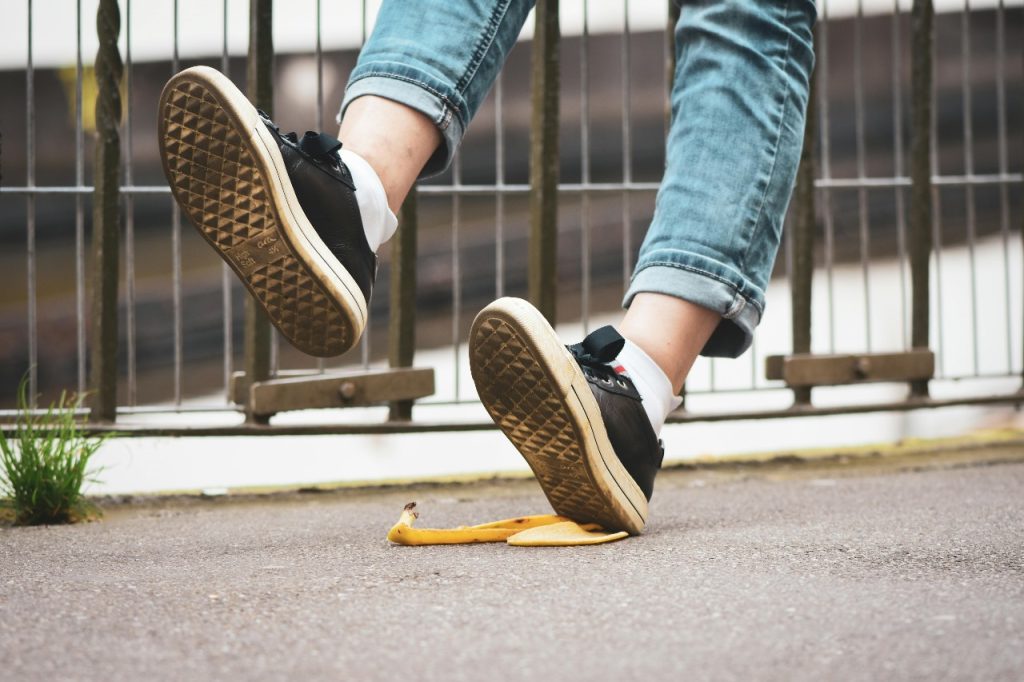A slip and fall may seem like just an embarrassing stumble, but your body can experience more trauma than you realize. Even if you bounce up quickly, hidden injuries—like spinal misalignments, muscle strains, or joint inflammation—can quietly worsen in the hours that follow. That’s why the first 24 hours after a fall are crucial. How you respond during this window can make all the difference in how fast and how fully you recover.
In this article, we’ll walk you through the key steps to take after a fall—and explain how chiropractic care plays a vital role in helping your body heal safely and naturally.
Pause, Breathe, and Assess Your Body
The first thing to do after a fall is to pause. Don’t rush to stand up, even if you think you’re fine. Your adrenaline might mask pain or stiffness that signals a deeper injury. Take a few deep breaths and mentally scan your body: Do you feel any sharp pain, tingling, or numbness? Is there swelling, limited motion, or an area that just doesn’t “feel right”?
If something feels off—especially around your back, neck, or joints—it’s best to avoid sudden movements. Get up slowly, using a sturdy object for support, or call for help if needed. A chiropractor can later help assess whether your spine or joints were jolted out of alignment, even if you don’t feel immediate pain.
Apply First Aid and Rest Strategically
Once you’ve ensured you can move safely, apply basic first aid to control swelling and pain. Follow the R.I.C.E. method—Rest, Ice, Compression, and Elevation.
- Rest: Take it easy. Avoid overexerting yourself on the first day.
- Ice: Apply an ice pack for 15–20 minutes every hour to limit inflammation.
- Compression: Wrap affected joints gently, but not tightly, to support circulation.
- Elevation: Raise swollen limbs above heart level if possible.
Over-the-counter pain relievers can help, but they only mask symptoms. A chiropractor can address the cause—whether it’s a joint misalignment, soft tissue strain, or nerve irritation—before it develops into chronic discomfort.
Watch for Warning Signs and Seek Chiropractic Evaluation
In the first 24 hours, it’s common for soreness to intensify as inflammation sets in. But some symptoms warrant immediate medical or chiropractic attention. Watch for:
- Pain that worsens instead of easing
- Trouble walking or turning your neck
- Tingling, weakness, or loss of balance
- Persistent headaches or dizziness
Even without major pain, a chiropractor can assess subtle misalignments that X-rays or general checkups might overlook. Chiropractic adjustments help restore proper alignment and nerve function, promoting healing without relying on medication. Clinics specializing in slip and fall treatment, focus on realigning the body and reducing inflammation before small issues become long-term problems.
Document the Incident and Your Symptoms
If your fall occurred in a public area, at work, or on someone else’s property, it’s important to record what happened. Take photos of the scene—like a wet floor or uneven pavement—and any visible injuries. Jot down what time it happened, who was present, and how you felt immediately afterward.
These details aren’t just for insurance or legal purposes—they also help your chiropractor track the mechanism of injury. Knowing whether you twisted your ankle, landed on your back, or hit your shoulder helps guide personalized care and rehabilitation.
Begin Gentle Movement and Chiropractic Recovery
After the initial rest period, gentle movement becomes essential. Immobility can lead to stiffness and delay healing. A chiropractor can guide you through light, controlled motions that restore flexibility and balance without straining injured tissues.
Chiropractic adjustments, soft tissue therapy, and guided stretching all work together to realign the body, reduce inflammation, and restore natural movement patterns. These treatments not only help relieve pain but also prevent future issues—like recurring back strain or hip imbalance—that can develop after a fall.
Treat the First Day as a Turning Point
The first 24 hours after a slip and fall are about more than ice and rest—they’re about listening to your body and giving it the right kind of care. Even when pain seems minor, hidden misalignments or soft tissue injuries can quietly disrupt your mobility and comfort for weeks or months.
By acting promptly—assessing your injuries, applying first aid, seeking chiropractic evaluation, and easing back into movement—you set yourself up for faster, more complete recovery. Accidents happen, but chiropractic care helps ensure your body heals in alignment, not in pain.


